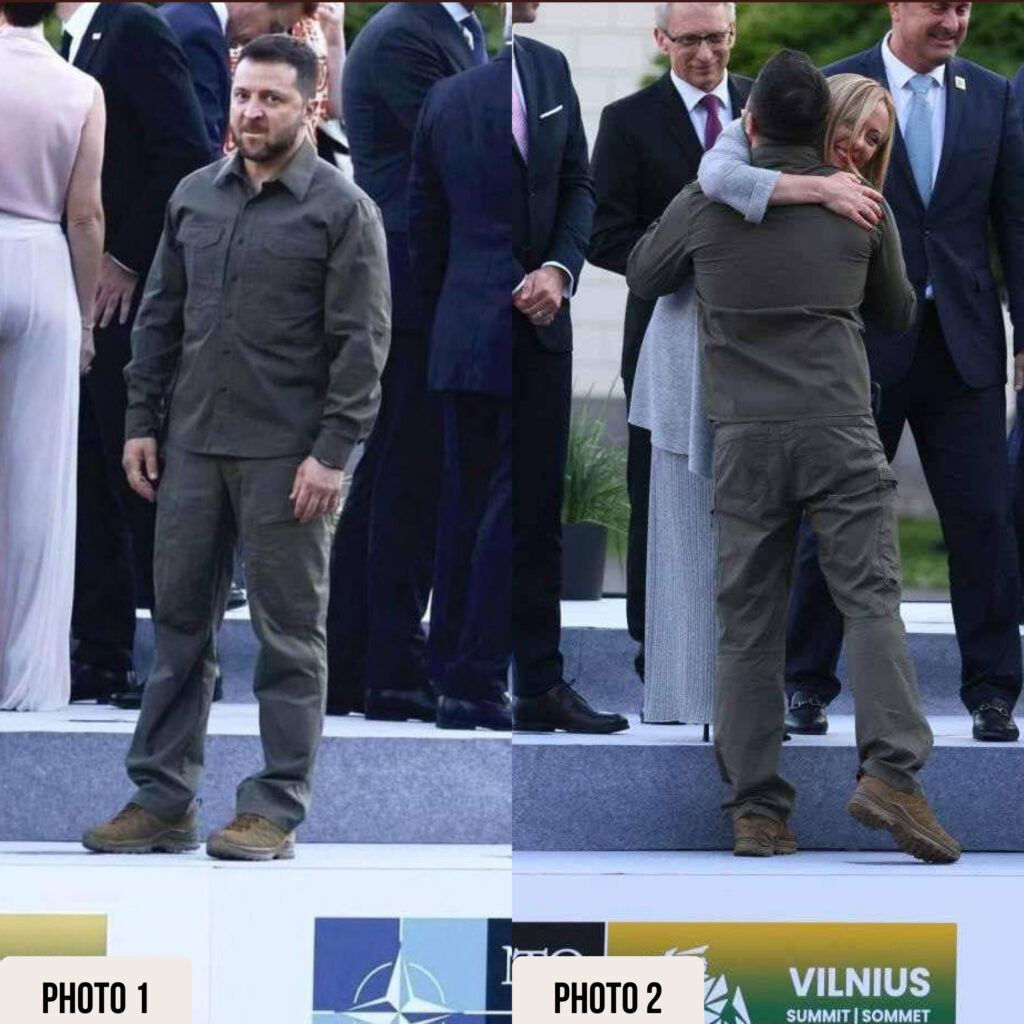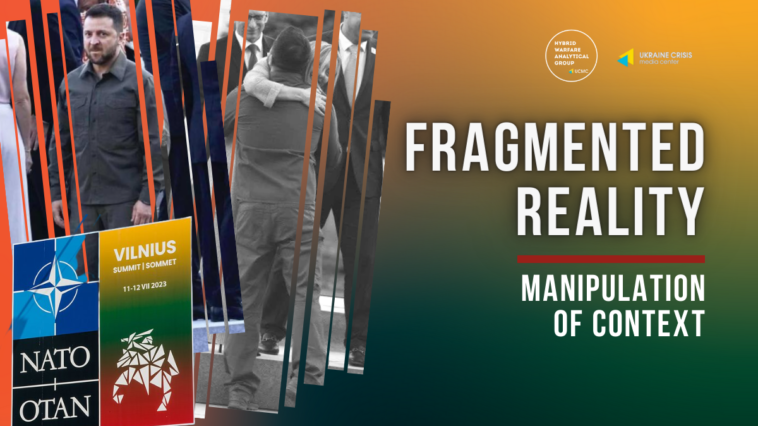This article presents an eloquent example of social media context manipulation by using carefully selected photographs to shape and distort narratives. By comparing two images of Ukrainian President Zelensky at the NATO summit, one displaying frustration and the other displaying warmth and support, it is clear how manipulation can influence public perception and reinforce an interested party’s manipulated reality.
Context is essential in communication as it enables receivers to grasp the importance of a message, make informed assumptions, and extract meaning from the overall communication. It encompasses various elements like time, place, surroundings, and circumstances.
When it comes to debunking Russian propaganda or manipulative narratives, understanding the context becomes crucial. It allows readers to gain an understanding of events, free from biased perspectives or agendas. By considering the broader context, individuals can analyze information objectively and form a more accurate interpretation of the situation at hand.
In the case of the NATO issue, the HWAG team has observed a notable context manipulation in social media, with various fake news circulating. Monitoring the news coverage of the NATO summit revealed an intriguing phenomenon: context manipulation.
Context Broken Down
Context is critical for gaining a thorough understanding of the big picture, the process, and the event in question. It provides context for the situation, reveals logistical connections, and can influence how events unfold. Manipulation of context becomes an extremely effective tool for distorting reality and shaping perceptions.
Let’s break context up into 2 layers. The first layer of context involves the image’s immediate information, such as (picture above) Zelensky standing alone and appearing somewhat angry. This is the subject that we observe and process, nothing more.
Then, the second layer, which delves into your emotional state and perception of the current world setting in which you live. For example…
Have you recently read negative or unfavorable news about Ukraine’s slim chances of achieving its ultimate goal (NATO membership) during the 2023 summit? Had you previously read Zelensky’s statements expressing concern about the summit’s outcome before the summit began? Or maybe you yourself encountered dissatisfaction with NATO’s ‘inaction’ throughout the war and your perception of NATO is under question. These narratives, also spewed out by the Russian propaganda machine, but not only, also by the Ukrainian establishment, shape your preexisting perception and fill the image with color and a narrative. It is through this lens that you will then interpret the ‘context.’
The Manipulation of Context: An Illustration
To illustrate the impact of context further let’s make it even more simple, removing the political component. Consider an aerial view image of a man leisurely swimming in the sea, that summer blue sea with the sun reflecting off of the ripple, and our subject (the man) relaxing on an inflatable sunbed, soaking up the sun—heaven, ey?
However, by altering the context and adding a shadow of a shark in the water near the man, the picture transforms into a source of anxiety and panic, even though it is still unclear whether this is a shark or not. This demonstrates how a change in context can completely alter the interpretation and emotional response to an image.
Now, returning to the two contrasting pictures of Zelensky taken, literally, moments apart, we understand how the events of the past remain the same, but the context changes. The main subject remains unchained (Zelenksy), but the entry of a new subject, such as the Italian Prime Minister, alters the narrative. This highlights how context shapes the story and influences our understanding of events.
A closer look..

In photo 1, Zelensky is caught off guard, staring directly at the camera with a frustrated expression. If a pre-existing narrative of failure and a frustrated Zelensky (as created by Russia) has already been established, this photograph can be used to further solidify the misleading narrative.
Therefore, one must look at the bigger picture at hand. Zelensky arrived in Vilnius at a critical juncture for both himself and Ukraine’s future, knowing it would be a difficult and, let’s give it to him, a nerve-wrecking day. Zelensky’s angered expression (photo 1) is captured by the cameras, and Russia, having established the pre-existing narrative, uses this moment to manipulate it.
In photo 2, however, Zelensky is greeted warmly by the Italian Prime Minister, a NATO member who staunchly supports Ukraine in its fight against Russia. The mood and the reader’s conclusion is altered. These two photographs tell two very different stories. Photo 1 depicts Zelensky as marginalized, frustrated, and humiliated, whereas Photo 2 depicts positivity, support, and a promising day of negotiations.
These contrasting images illustrate how manipulation can utilize carefully selected photographs to shape and manipulate the narrative. By highlighting one photo over the other, an interested party can skew public perception and reinforce their desired message. As we observed, the narrative which took precedence was ‘the failed NATO summit.’ But was it a failure?
In fact, the NATO summit was far from a ‘flop’, actually scoring significant legislative achievements, paving the way for Ukraine’s potential future with NATO, as noted by Ukrainian political analyst Oleg Saakyan. He tells how, while immediate membership was unlikely, a notable paradigm shift was evident. There was a clear invitation for Ukraine to join NATO upon meeting conditions set, the removal of the former requirement ‘Member Action Plan,’ and structured financial and military aid commitments which replaced ad hoc arrangements.
It is important to note that Russian propaganda for days before the summit pushed a joint, polar opposite campaign of “Ukraine will join NATO; we must be ready to defend ourselves” and the alternative “NATO will humiliate Zelensky and the Ukrainian people; it will never accept Ukraine while at war with Russia.”
Therefore, Russia or an interested party, with such tactics, gives itself a window of opportunity to manipulate the context, no matter the outcome of the summit. Either of these photos, taken moments apart, are capable of controlling its narrative and therefore have the potential to distort the perception of partners both in Ukraine and abroad. And so, it is critical to understand why manipulation at this level sows disbelief, especially when the “context” is created prior to the actual event.


